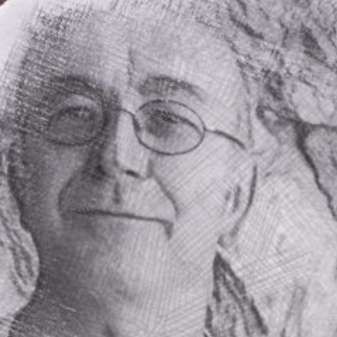"A composer's music should express the country of his birth.." (Rachmaninov)
Had Debussy adhered to his programme partner’s dictum, he might have struggled to write Images (1905-1912). This orchestral trilogy passes through England, Spain and France - or should that be England, France and Spain? In his conversationally informative remarks to a capacity audience at the concert's opening, RSNO conductor, Stéphane Denève, described how he had always felt uneasy with the former, more accepted order. He gave two reasons for this: he thought the geography of the trip to make more sense finishing in Spain; he also considered Ibéria (Spain) a better finisher. Then, while reading the composer's letters during the summer, he discovered that Debussy had conceived of the more ergonomic, south-bound order. And so it was that he announced the order of the movements as Gigues, Rondes de printemps and Ibéria - this final one a triptych within the triptych.
There are a couple of great ironies to this piece. The portrait of Spain would undoubtedly be the most guessable in a blind listening. Yet, unlike the other two national characterisations, it contains no folkloric material from the country in question. Moreover, the sum total of Debussy's personal experience of the Spain was an afternoon spent at a bull-fight in San Sebastian. This suggests that the movements of Ibéria pertaining specifically to morning (Le matin d'un jour de fête) and night (Les parfums de la nuit) are portraits from the imagination and not the memory. The 'feeling' of England is summoned up by way of the Northumbrian folk tune, The Keel Row. This is harmonised in such a tangential, impressionistic and frankly eerie way that the movement's original title of Gigues tristes (sad dances) seems suitable.
The orchestration (finished by Debussy's friend, André Caplet) shimmers throughout and, in this particular performance, the colour of the harps, celeste and xylophone grabbed the attention. Fine as the performance was, something - perhaps the impressionism of the piece itself - failed to grab me by the lapels and demand my sustained attention. I felt part of the journey but was looking out of the window - the voice of the tour-guide fading into the distance. That said, I was able to enjoy the spirited engagement of Denève. Fleet of foot on the podium, he seemed able to transport himself - feet together - about 1/3 of a metre forward, in the manner of time-lapse photography.
Everyone loves a good anecdote about the early, prodigious talent of a soloist about to take the stage. Denève told us of Nikolai Lugansky's first encounter with Piano Concerto No. 3 in Dm Op 30 by Rachmaninov. His teacher at the time, the great Tatiana Nikolayeva, mentioned to him that there would be an opportunity to play this as yet unknown piece in one month's time. Lugansky returned three days later having memorised the entire 40-minute concerto. Contrastingly, those who have seen the film Shine will recall the punishing outcome of the hero's tackling this “mountain” – “the hardest Everest.”
Written in 1909 the piece was dedicated to Josef Hoffman, whom Rachmaninov greatly admired. However, Hoffman never played it and he is reported as saying it was 'not for him'. Could this have been meant in the same sense that stepping into the ring with Mike Tyson is 'not for most of us'? However, concentrating overly on the monumental stature of the work risks losing sight of the fact that it is a piece of great beauty, and emotional warmth. There are certainly pyrotechnics but these in no way eclipse the musical content – the gripping harmony and, most of all, the wonderful, soaring melodies. If, even in exile, Rachmaninov hoped that something of his homeland spoke through his music then surely these over-arching melodies have the potential to evoke the vast landscapes of his native Russia.
Moscow-born Lugansky's performance was not only very assured but thoroughly engaged and engaging. The cadenzas were impassioned and the phrasing beautiful throughout. Lugansky's memory of Nikolayeva sums up, for me, his shining performance. He stresses that although technically beyond question, she was not a technician and regarded technique as a response to a musical demand. Moreover, what really mattered was how one thought about and listened to music.
The response of the Usher Hall audience - the most explosive and overpowering I have experienced at a classical concert - confirmed that I was not alone in sensing the embodiment of this philosophy in his playing.
To thank the clamouring audience of two thousand - and as a way of helping them down the mountain, Lugansky offered an encore by another master of chromatic pianism - Liszt's Valse Oubliée No. 1. While not exactly a blank canvas, this elegant and wonderfully played encore had the decompressing effect of a pressure valve at the end of his high-intensity performance.
Honesty behoves me to point out that I was not familiar with this unannounced encore and owe it to the generosity of a critic from a rival (or should I say partner) website, musicalcriticism.com, that I am now able to name it without hours of speculative, YouTube-based forensic work.


